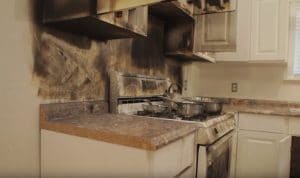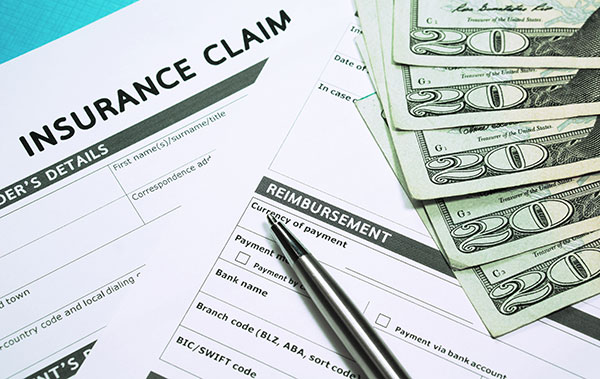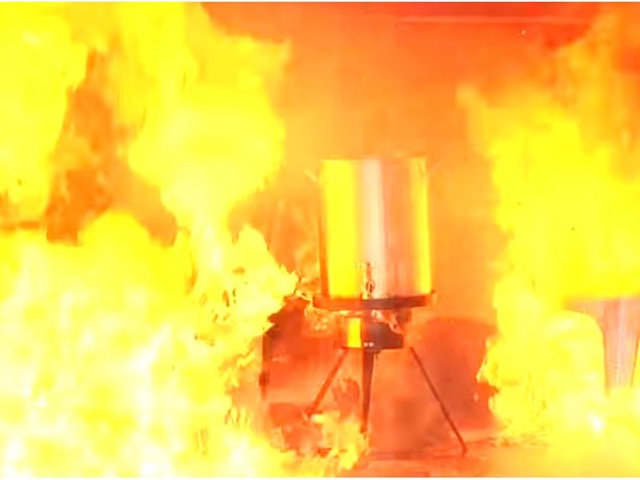How Do You Clean Up Fire Damage?
When flames engulf a home, the outcome is disastrous! The physical property is charred beyond recognition while leaving emotional scars on the family. Recovering from fire damage is a daunting process. But normalcy returns upon cleaning up the fire damage.
A widespread blaze leaves catastrophic destruction in its wake. PorousPorous describes a material that contains small openings or ... More surfaces, like walls, ceilings, and insulationInsulation is a material used in buildings to reduce the tra... More absorb the smoke. SootSoot is fine black particles composed of carbon and other ma... More also covers the damaged property, staining textured surfaces in the process. The sootSoot is fine black particles composed of carbon and other ma... More discolors plastics, carpeting, textiles, and unburnt wood.
Continued Damage Caused by Smoke and Soot

Smoke and sootSoot is fine black particles composed of carbon and other ma... More will continue the damage, even after the fire is out.
Smoke and sootSoot is fine black particles composed of carbon and other ma... More are two byproducts of fire that severely corrode structures, including metals and other materials. Furthermore, the composition of sootSoot is fine black particles composed of carbon and other ma... More (carbon materials, PVC, and sulfur) can cause serious health problems, like cancer or infections, if not cleaned up right away.
Swift action is critical to preventing permanent damage from sootSoot is fine black particles composed of carbon and other ma... More and smoke. The longer the goods inside a property are exposed to smoke and sootSoot is fine black particles composed of carbon and other ma... More, the more likely the discoloration will be irreversible. Consequently, the damaged items will have to be replaced instead of restored.
Fire Damage Cleanup
Cleaning up in the aftermath of fire takes professional skill. Fire damage can be imperceptible in some areas, allowing the average homeowner to easily miss it. The sootSoot is fine black particles composed of carbon and other ma... More and smoke must be removed from places where the particles are clearly visible, as well as from areas where they are not.
A homeowner, however, can take a few initial steps prior to calling in the fire and smoke damage restorationRestoration is the process of returning a property to its pr... More experts. The following tips will keep the homeowner physically safe in the wake of serious structural damage to the property and offer guidance during cleanup efforts:
Assess the Damage
Before entering the fire-damaged property, obtain clearance from fire department officials. A fire marshal will declare whether or not the building is safe to re-enter. The fire may have destroyed the gas and water supply lines, making the property hazardous. Wait until officials inspect the building.
Call your Insurance Agent
Notify the insurance agent of the fire and resulting damage. Especially during the first few days after the fire, stay in close contact with the insurance company. Discuss the value of the property. Request replacement policy copies if they were lost in the fire.
The insurance agent will request documentation of the damage to valuables. Once the fire marshal has declared the property safe to re-enter, begin the damage assessment. Wear safety gear, like goggles and close-toed shoes, while taking notes, photos, and videos of the destruction.
Renters, Listen to your Landlord
Renters, too, are advised to take caution. The landlord will likely ask that the tenant stays out of the building until management arrives to document the damage. Renters should also immediately notify their insurance company about the fire, no matter how minor.
Prevent Further Damage
After the fire officials have to extinguish the fire with chemical retardants, residual materials may still exist. Immediately wash away the reddish substances to prevent deep stains. The property owner may clean up a few square feet of fire damage.
Minor soot and smoke stains
Minor sootSoot is fine black particles composed of carbon and other ma... More and smoke stains may be washed off with a garden hose. In instances of extreme staining, utilize a power washer. You may wash your windows with a household glass cleaner. Wet mopping is also sufficient for cleaning sootSoot is fine black particles composed of carbon and other ma... More and ash from porches and exterior stairs.
Water Damage
Inside the home, turn on the fans to increase circulation. Oftentimes, the extinguishing of the fire will leave water damage. Therefore, be sure to thoroughly dry the carpets, drapes, and furniture to prevent moldMold is a type of fungus that grows in damp or humid conditi... More. In humid weather, opt for a dehumidifierA dehumidifier is a device that removes excess moisture from... More. In cold climates, a heating system can remove excess humidityHumidity is the amount of moisture or water vapor present in... More.
Smoke and Soot Cleanup
 SootSoot is fine black particles composed of carbon and other ma... More is an oily substance and will take elbow grease to eliminate. A chemical spongeA sponge is a porous material used to absorb liquids or clea... More, non-water-based cleaner, paint thinner or rubbing alcohol can successfully remove sootSoot is fine black particles composed of carbon and other ma... More stains. Prior to using any chemicals that produce fumes, open the windows for adequate ventilationVentilation is the process of exchanging or circulating air ... More.
SootSoot is fine black particles composed of carbon and other ma... More is an oily substance and will take elbow grease to eliminate. A chemical spongeA sponge is a porous material used to absorb liquids or clea... More, non-water-based cleaner, paint thinner or rubbing alcohol can successfully remove sootSoot is fine black particles composed of carbon and other ma... More stains. Prior to using any chemicals that produce fumes, open the windows for adequate ventilationVentilation is the process of exchanging or circulating air ... More.
Remove smoke odorAn odor is a smell, often detectable by the human nose, whic... More from clothing by adding a cup of vinegar to the wash cycle; multiple washes may be needed. Consult a dry cleaner about removing smoke smells from furniture and other goods that cannot be thrown into the wash. Professional dry cleaners may recommend effective counteractants.
Hire a Professional Fire and Smoke Damage RestorationRestoration is the process of returning a property to its pr... More Service
Major instances of fire damage require the skilled services of experienced fire damage restorationFire damage restoration is the process of repairing and rest... More technicians. For instance, noxious odors from smoke can travel through a home’s air ducts and produce recurring smells for months after the fire damage. Thoroughly airing out the property is necessary.
Professional fire damage restoration crews alleviate the foul odors caused by the fire with a process known as thermal fogging. This technique opens up the pores in the walls, thereby neutralizing the smoky odors. Thermal fogging helps clear the air even in attics and odor-absorbing insulationInsulation is a material used in buildings to reduce the tra... More.
Calling in professionals who understand the restorationRestoration is the process of returning a property to its pr... More process inside and out is key to restoring a home to its pre-loss condition. Homeowners who try to restore a property on their own risk costly failures. The expense of hiring pros is better than losing money on failed restorationRestoration is the process of returning a property to its pr... More attempts.
When a fire has devastated your home or business, consult the best in fire damage cleanup. A prompt call will halt the silent spread of fire and smoke damage to other parts of the home or commercial space. Technicians arrive within three hours of the call.
Our fire damage restoration process starts with an initial evaluation of damage to areas, such as the roof, insulationInsulation is a material used in buildings to reduce the tra... More, flooring, and walls. Skilled crews then pre-clean and treat the fire-damaged space. They clean the walls, ceilings, furniture, fixtures and structural components.
Content cleaning and pack-out services provide customers with a safe space to house damaged belongings until they are restored and ready to be moved back in. Professionals can also repairRepair is the act of fixing or restoring damaged property, m... More the water damage that results after the fire is extinguished.













